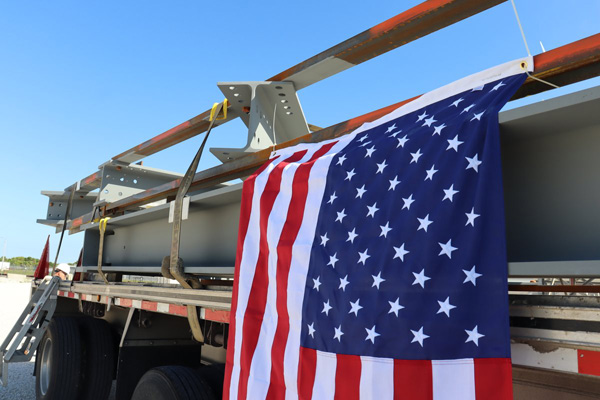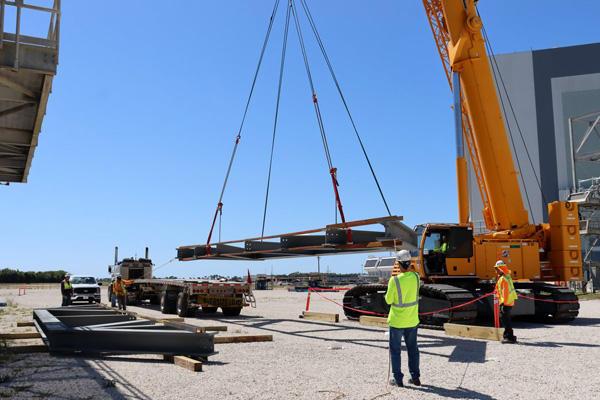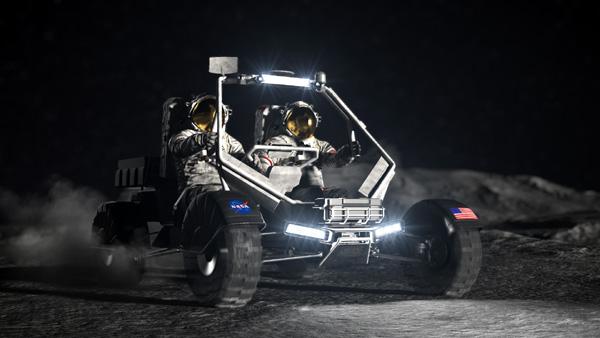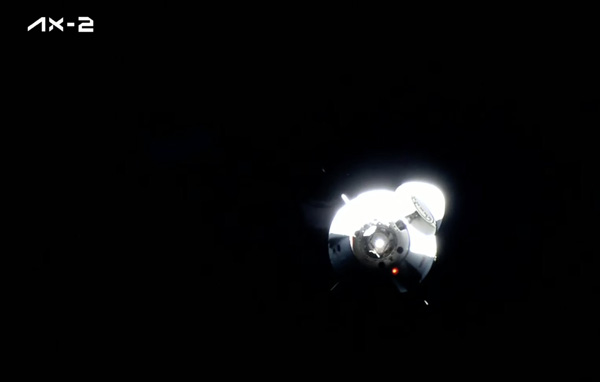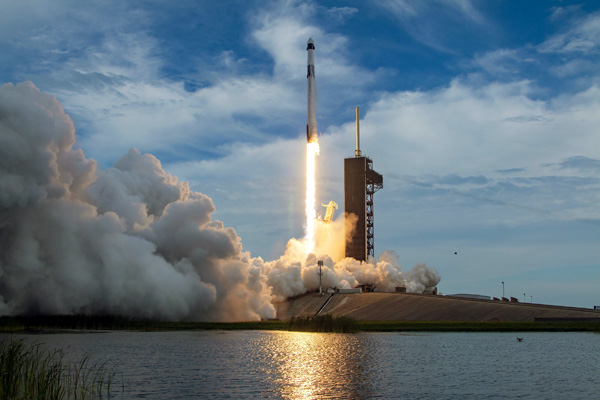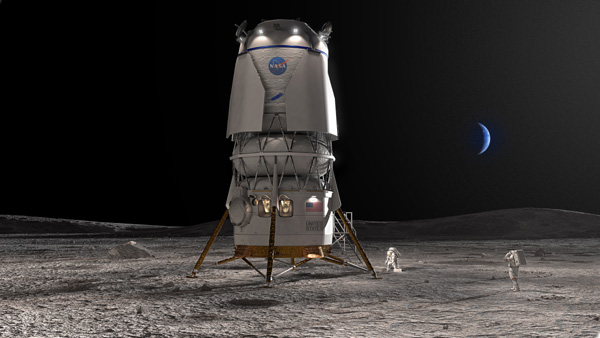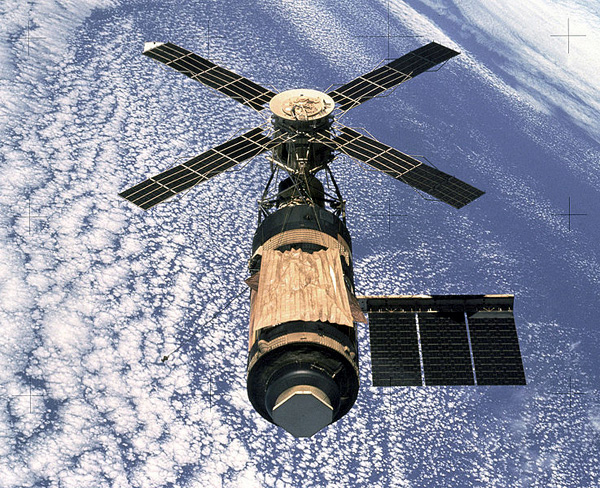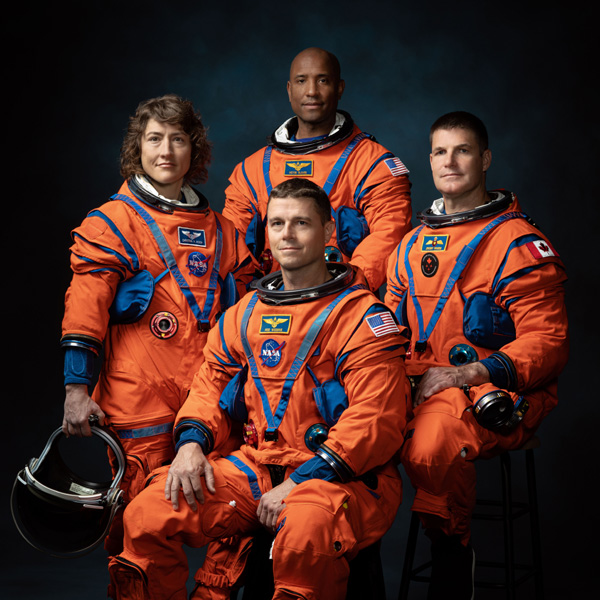 NASA
NASA Gears Up to Train Artemis II Crew for Moon Mission (News Release)
NASA
NASA Gears Up to Train Artemis II Crew for Moon Mission (News Release)
The four astronauts who will fly on NASA’s
Artemis II flight are getting ready to begin their training in June, as NASA prepares for the first crewed mission on the agency’s path to establishing a long-term presence at the Moon for science and exploration.
NASA astronauts Reid Wiseman, Victor Glover, Christina Hammock Koch and CSA
(Canadian Space Agency) astronaut Jeremy Hansen will complete their training over the course of about 18 months before their 10-day mission. They’ll receive detailed lessons on
Orion spacecraft and
SLS (Space Launch System) rocket systems, and learn to operate and monitor systems for the ascent, orbit and coast, and entry phases of the mission, and how to respond in emergency situations.
"The crew of our Artemis II test flight will pave the way for the incredible science at the forefront of all of our future crewed missions," said NASA Deputy Administrator Pam Melroy. "Their flight test expertise and personal bravery as they journey to the Moon will enable the next big step in our Moon to Mars strategy."
During the first phase of training, the crew will learn about key systems to establish a foundation for the rest of their training. Experts from NASA’s Flight Operations Directorate at the agency’s Johnson Space Center in Houston will train them on daily operations in space and mission phases, and the crew will begin practicing how to operate Orion’s crew displays, vehicle controls, and audio and imagery systems.
“We’re building a robust training plan for the crew to ensure they’re ready for every aspect of this first mission to the Moon under
Artemis on our newest spacecraft and rocket,” said Jacki Mahaffey, lead training officer for the Artemis II crew. “Since this is the first time we’ll train crew for Artemis missions, Reid, Victor, Christina and Jeremy are going to be integral to helping us refine future training requirements, as well.”
During the ascent and entry training phases, the crew will focus on vehicle systems and operations to support normal and potential emergency situations during the two most highly-dynamic phases of the mission. Ascent training will include prelaunch operations around the launch pad and give the crew a deep understanding of major milestones leading up to and during launch, as well as the first few hours in orbit.
To prepare for their return to Earth, the crew will learn how to monitor and execute entry operations, how to communicate with recovery teams, and how to handle different post-splashdown scenarios they could face as they await recovery on the ocean surface.
Orbit and coast training will show the crew how to carry out planned mission activities, and how to handle any unplanned situations that arise. This phase of training will give the crew the skills they need to execute the rest of their first day in space after launch, when they will carry out a rendezvous and proximity operations demonstration.
The demonstration in high-Earth orbit will help systems experts and flight controllers better understand Orion’s manual-piloting qualities and reduce risk for future Artemis missions when Orion docks with the
Gateway lunar space station or lunar human landing systems. The crew will also learn about the solar arrays that provide power for Orion, how to troubleshoot communication issues, and respond to other potential situations.
Throughout their training flow, the crew will also refine their understanding of water survival and emergency exit operations, practice medical and exercise device use, and learn how to use Orion’s other day-to-day life support systems including for food preparation.
“The majority of the crew’s training will take place at Johnson Space Center, where we have an Orion simulator and a mockup of the crew module to help the crew understand placement and orientation of what’s inside, and at Kennedy Space Center in Florida, where rocket and spacecraft hardware will come together and launch countdown activities occur,” said Mahaffey. “The crew will begin their training in our launch and entry simulator in Houston in the fall, and we plan to begin our integrated simulations between the crew and mission control about 12 months before launch.”
NASA teams are developing robust plans to simulate every aspect of the mission, including the countdown, in-flight operations, entry and recovery, to practice procedures. While some rehearsals will involve crew and others take place among systems operators, the agency will conduct a host of integrated simulations with the crew, launch and flight control teams in the months before the mission.
Through Artemis missions, NASA will use innovative technologies to explore more of the lunar surface than ever before. NASA will collaborate with commercial and international partners and establish the first long-term presence on the Moon.
Then, we will use what we learn on and around the Moon to take the next giant leap: sending the first astronauts to Mars.
Source: NASA.Gov
****
 NASA
NASA

